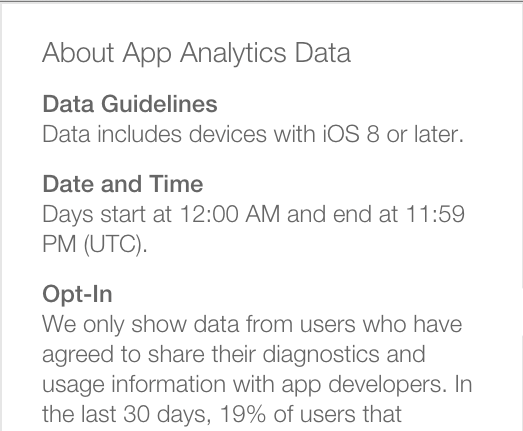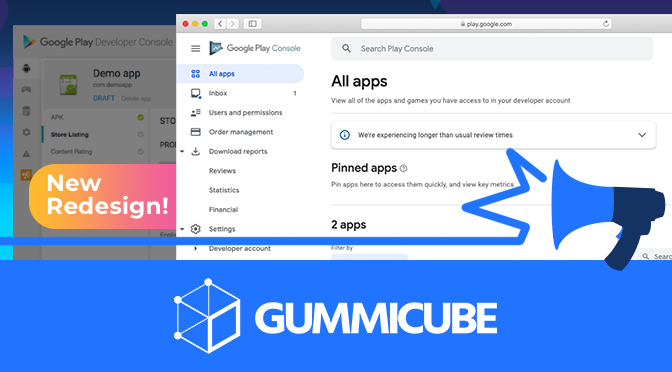
App Store Holiday Schedule 2020
Posted on November 23rd, 2020
When is the App Store Holiday Schedule 2020? Learn about the dates of this year's shutdown and how to prepare.

After a week of playing around with the data presented in Apple's new Analytics module - thought it was time to take a deeper dive and share some screenshots. When you login to Apple App Analytics, you are presented with all of your apps, and their
 As best as I can tell, the only unique piece of data Apple provides in their new module is App Store Views - and they show it front and center.
As best as I can tell, the only unique piece of data Apple provides in their new module is App Store Views - and they show it front and center.
Notice that "Sessions" data is for users who have opted into data collection. For this app - the % of users who opted in was only 19%. You can see the optin rate for your app by clicking on the question mark at far right of the app details screen. 
 Because Sessions require an opt-in to track, it follows Retention would require opt-in as well since Retention is essentially tracking sessions by day. Note:
this is not unique to Apple.
All analytics providers require an opt-in for tracking.
Because Sessions require an opt-in to track, it follows Retention would require opt-in as well since Retention is essentially tracking sessions by day. Note:
this is not unique to Apple.
All analytics providers require an opt-in for tracking. 
This app's data starts April 1st, although I am not sure why.
We didn't request access to the beta until May. Apple may have added all apps around this time. 
If you are not currently using an analytics solution (like Flurry or Google Analytics or Facebook)... First - shame on you. Second, all of this may seem pretty cool. But session data, attribution, retention, units (installs), sales, devices, geographies.... all of this is and has been available through existing and free offerings (see above).
From Apple's Analytics FAQ page :
What are App Store views?
App Store views are the number of times your app’s App Store page has been viewed on a device using iOS 8 or later. Although apps can be purchased or downloaded without visiting the App Store product page, such as directly from search results, only App Store product page views are counted.
The problem with this of course is that without being able to compare "units only from app store views" with "app store views", there is no real conversion rate to monitor or try to improve. Units (app installs) could be from the app store view, but could also be from:
As deep-linking becomes more widely adopted, there are many ways to download an app without viewing the app store page first. The only thing app store views really gives us is measuring ASO effectiveness (and even that is then missing downloads direct from search results.)
We are accustomed to so much data being available from web assets, that the silos of iOS and Android seemingly starve developers and marketers of data and insights. Apple's Analytics module thus far presents little really useful outside of App Store Views. There are clear missed opportunities. Units from "app store view only" (for example) would enable publishers to get some idea of how our creatives and descriptions are reaching our audience, and help us create a better experience for users. Something to look forward too - maybe will be addressed during the upcoming WWDC.

When is the App Store Holiday Schedule 2020? Learn about the dates of this year's shutdown and how to prepare.

Apple's App Store Guidelines have strict privacy requirements. Developers now must provide information to users on the App Store listing regarding the data they access.

The Google Play Developer Console has been updated with a new design and adjusted tools. What's different, and how will it impact App Store Optimization?